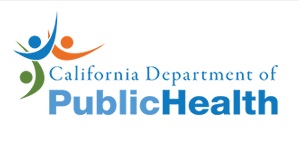Title Page
-
Conducted on
-
Prepared by
-
Location
Preoperative Phase
-
The scheduler can positively identify the privileges that allow the surgeon to perform the procedure booked.
-
The scheduler can identify the expiration dates of any providers with fluoroscopy supervisor and operator licenses.
-
There is an order for any preoperative testing conducted (some labs may have been done prior to arrival or there is a protocol for certain patients that the nursing staff follows).
-
If there are protocols used, a copy of the protocol is placed on the medical record.
-
There is a preoperative nursing assessment completed according to policy.
-
The nursing assessment screens for risk of suicide.
-
The nursing assessment screens for abuse, neglect, exploitation.
-
There is an informed consent for the procedure to be performed.
-
There is documentation that the procedural physician has explained the risks and benefits of the planned procedure.
-
There is a consent for anesthesia where an anesthesia professional has explained the risks and benefits of the planned anesthesia.
-
There is a preanesthesia assessment done within the 48 hours immediately prior to the administration of anesthesia that includes a review of the medical history, including anesthetic history, medication history and allergies(§482.52(b) (1)).
-
There is a preanesthesia assessment done within the 48 immediately prior to the administration of anesthesia that includes an interview (if possible depending on patient condition) and examination of the patient (§482.52(b) (1)).
-
There is a preanesthesia assessment done within the 48 immediately prior to the administration of anesthesia that includes an interview (if possible depending on patient condition) and examination of the patient (§482.52(b) (1)).
-
There is a preanesthesia assessment done within 30 days of the administration of anesthesia that includes any additional potential anesthesia problems (e.g. difficult airway, ongoing infections, limited IV access).
-
There is a preanesthesia assessment done within 30 days of the administration of anesthesia that includes additional preanesthesia evaluation based on the patient's condition (e.g. stress test, labs, specialist consultation).
-
There is a preanesthesia assessment done within 30 days of the administration of anesthesia that includes plan for anesthesia care including types of medications for induction, maintenance and postoperative care as well as discussion with patient of risks and benefits of planned anesthesia.
-
The staff use clipper shavers for patients requiring hair removal.
-
There is documentation of preoperative education of the patient regarding the procedure and postoperative experience.
-
The site is marked prior to the patient moving into the operating suite by the surgeon.
-
There is a preverification process that is followed.




















